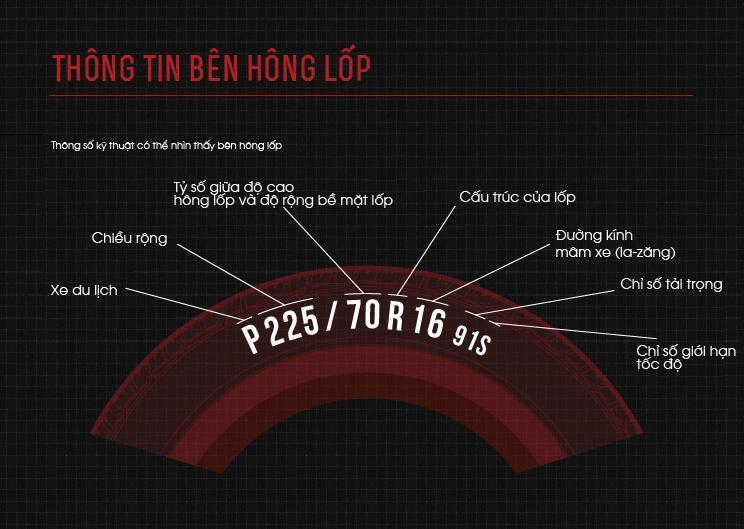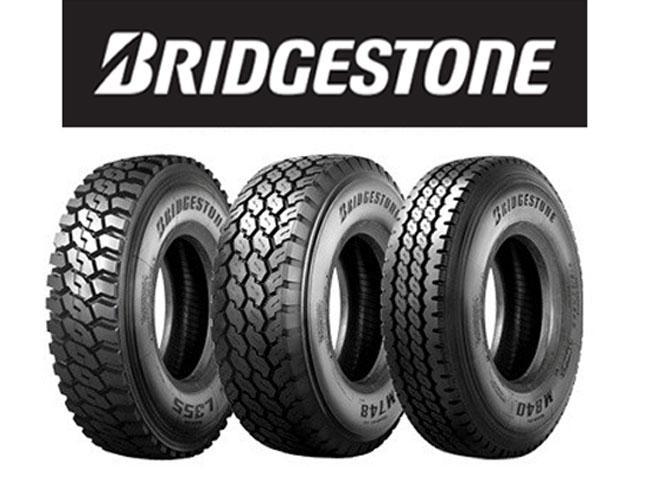2021-12-23 | Bridgestone Team
THE REASON WHY WE SHOULD ACKNOWLEDGE THE CAR SPECIFICATIONS AND SOME NOTES FOR DRIVERS
Car tire specifications are numbers printed on the sidewalls of tires. Each indicator will represent a criterion used to distinguish or recommend the maximum limit related to tires. Based on car tire specifications, drivers can know whether this tire is suitable for vehicle type, road surface conditions, and climate. In addition, the recommended level index and maximum limit are set by the manufacturer to ensure safety and maintain optimal tire quality. Here are the tire specifications and why drivers need to know them.
1. What are the specifications of car tires?
The letters identify the tire type
Each type of tire is manufactured specifically for a different vehicle type, this is indicated on the sidewalls by letters. According to The Tire & Rim Association, Inc., the letter "P" is a tire for pickup trucks, passenger cars, small trucks, and SUVs. The letter “LT” is a tire designed for pickup trucks, light trucks, and trailers. The letter “T” is a spare tire, the “ST” tire is for specialized trailers.
Tire width
The tire width is the distance between the two sidewalls in mm. This specification is printed right after the letter indicating the type of tire.

Car tire specifications are printed on the sidewalls of tires
SPECIFICATIONS ON THE SIDEWALLS
The specifications are printed on the sidewalls
P (Passenger car): Vehicle type
225: Width
70: Aspect ratio of height and width of the tire
R: Tire construction
16: Lazang diameter
91: Load index
S: Speed limit index
The aspect ratio of width and height of the tire
This is the ratio of the tire thickness to the width of the tire. This ratio is calculated in % and varies in many tire lines such as 60%, 70%, or 75%. Current popular passenger car tires have this ratio in the range of 55%-75%. Tires with a lower index of 40-45% are high-performance tires that have the advantage of better handling than high-ratio tires.
Tire construction
Tire construction is identified by the letter “R” or “D”, printed after the ratio of tire thickness and width. The letter “R” stands for Radial Tires, also known as radial knitting cords, which is the most popular tire construction in the Vietnam market. Tires with radial tread are rated for better traction and good ductility. The letter “D” means Diagonal or Bias Tires are diagonally cords crossing the tire. Bias / Diagonal tires are characterized by many layers of knitting cords placed diagonally on top of each other with an angle of 30 - 40 degrees. This tire construction uses lots of rubber, so it feels smoother to drive, less cut or punctured than Radial tires.
Wheel diameter
The next specification is the wheel diameter, in inches. There are tires from 14 inches (about 35.56cm), 16 inches (about 40.64cm) ….
Tire load index
This is not a specification that represents the vehicle's load level but should be referenced according to the standard table of the International Tire and Rim/Lazang. For example, for tires with a load index of 70, the maximum weight the vehicle can load is 335kg. Tires with a load index of 90 will load up to 600kg.
Speed limit indicator
The last letter in the tire specification series is the speed indicator. Each letter corresponds to the maximum speed that the tire can withstand. For example, "S" tires can handle 112 mph, "R" tires have a speed limit of 106 mph. In case the vehicle is equipped with many different types of tires, the driver should pay attention to the maximum speed should only be equal to the allowable speed of the smallest tire.
2. Why should we acknowledge the tire specifications?
Each type of tire is manufactured to suit each vehicle type, vehicle model as well as different road and weather conditions. When knowing the car tire specifications, the drivers will adjust the speed when driving, the maximum load, or choose the type of tire with the most suitable construction. Understanding the features of tires, drivers will avoid unnecessary risks and mistakes, tires will be well-preserved, maintained, timely, prolong life, and save costs.
3. Some other notes about car tire specifications:
Drivers should pay attention to the maximum tire pressure printed on the sidewalls. Under-inflated or over-inflated tires both adversely affect tire life, driving speed and driving feel. Properly inflated tires to the correct pressure are the way to reduce the risk of early tire damage, maintain optimal driving speeds, and provide the most satisfying driving experience.
A specification related to safety when traveling and braking is the grip of the tire, which is also printed on the sidewalls. If the tire's traction index is high, in case the driver needs to brake quickly, the car will stop faster. Tires with high traction also ensure safety, the car is less likely to slip when moving through slippery roads.
Drivers should note that the symbol "TT" means "tube-type" is a tire with an inner tube, while a tire marked TL or printed with the words "tubeless" is a tubeless tire. Tubeless tires are more expensive, but safer and have a better driving feel. Drivers also need to note that the tire brand is printed on the sidewalls, this is a factor that shows the reputation and quality of the tire.

Bridgestone tires provide full specifications of car tire
Currently, Bridgestone tires are rated as high-quality tires and are favored by many drivers. Bridgestone tires show all the necessary specifications to help drivers compare and choose the most suitable tire for their car.